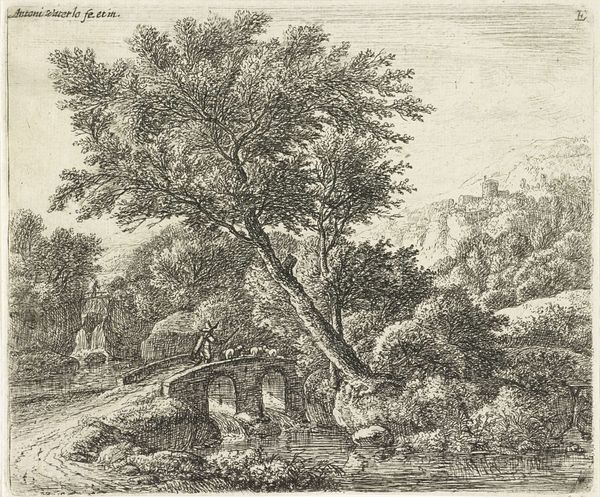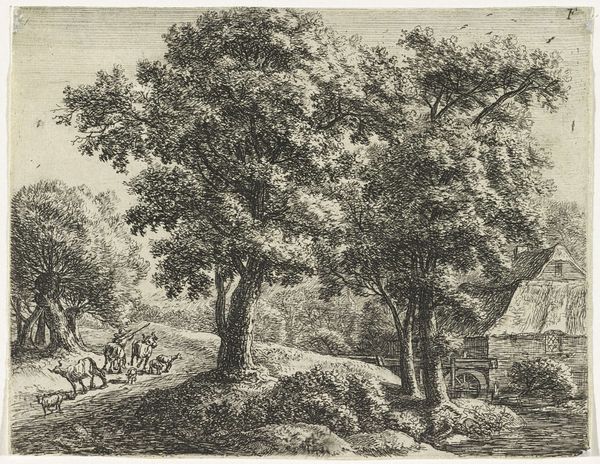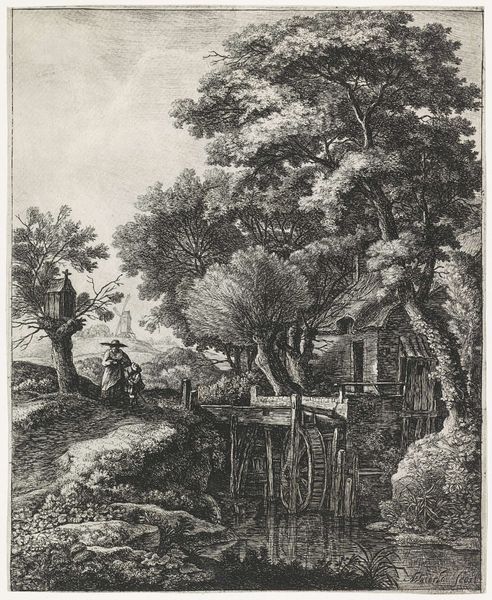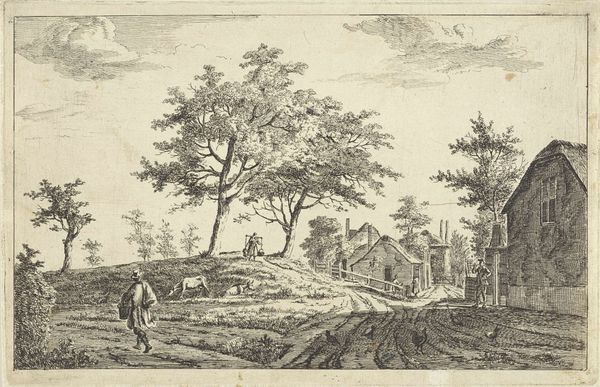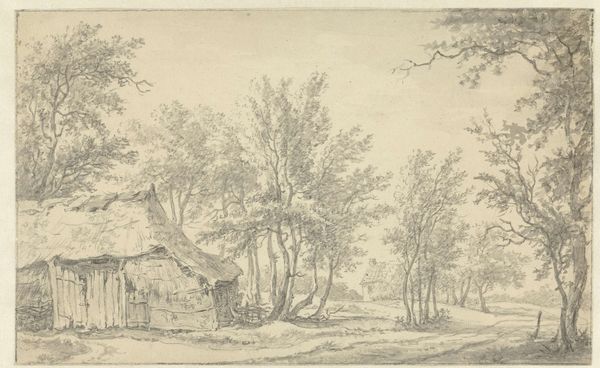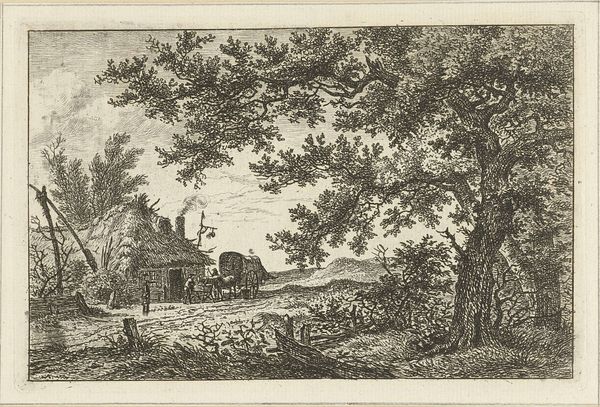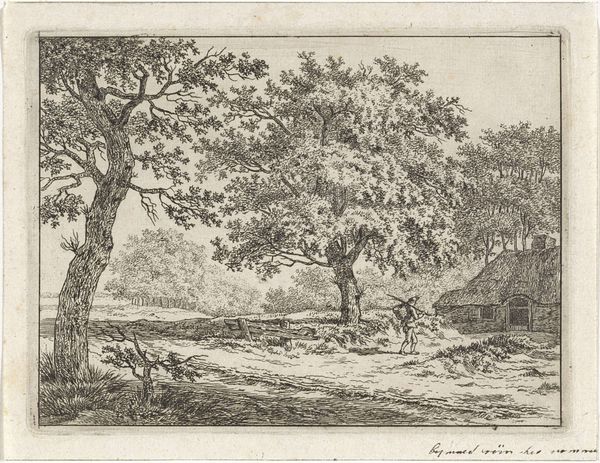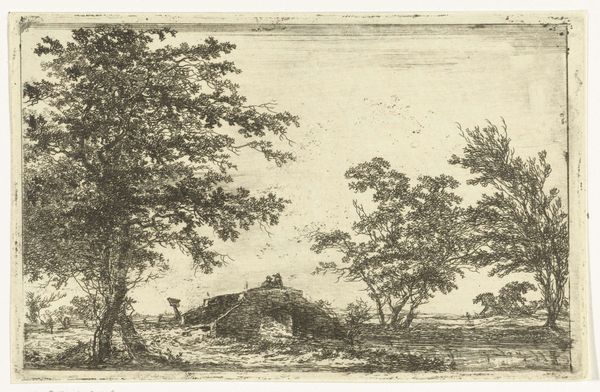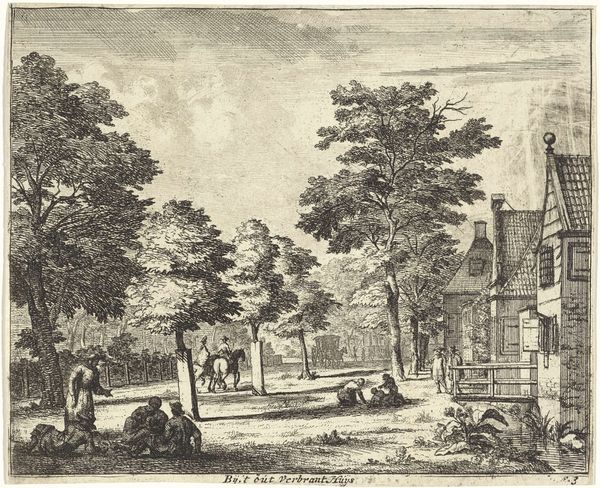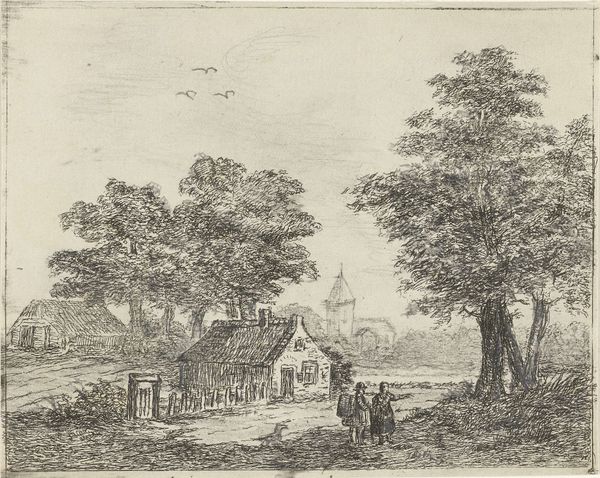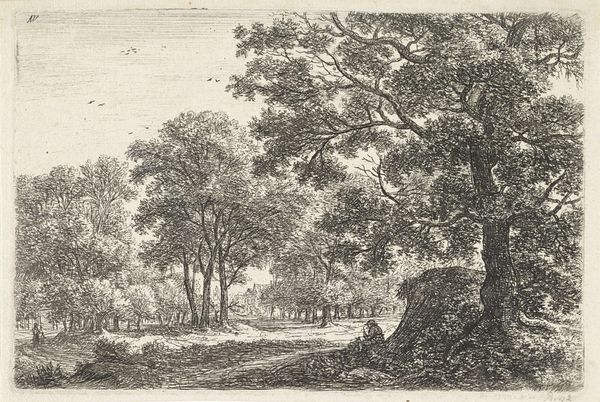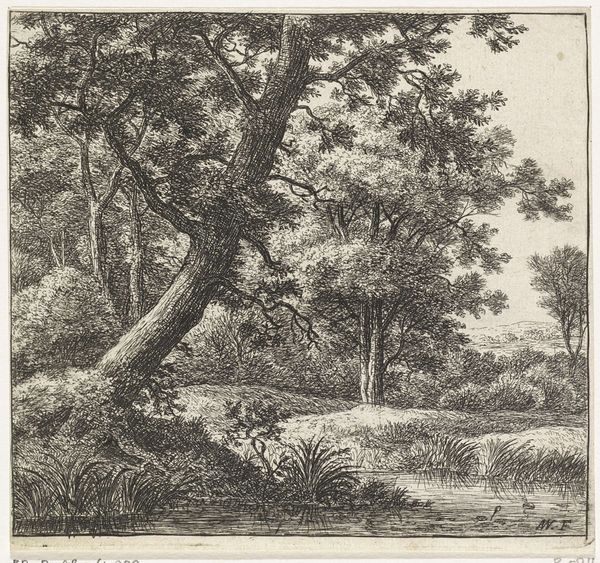
drawing, etching
#
drawing
#
neoclacissism
#
light pencil work
#
pen sketch
#
etching
#
pencil sketch
#
old engraving style
#
landscape
#
personal sketchbook
#
forest
#
pen-ink sketch
#
pen work
#
sketchbook drawing
#
pencil work
#
genre-painting
#
sketchbook art
Dimensions: width 85 mm, height 75 mm
Copyright: Rijks Museum: Open Domain
Curator: I’m immediately drawn to the atmosphere; it’s quiet, almost melancholic. The delicate etching lines create a soft, dreamlike quality. Editor: Indeed. What you're responding to is visible in "Disturbed Landscape with Farm," a work created by Jan Evert Grave, dating from 1786-1805, part of the Rijksmuseum collection. Grave, known for his landscapes, crafted this scene using etching, a process allowing for intricate detail. But let’s consider its broader appeal during a time when genre paintings began to flourish in popularity. Curator: That subdued palette certainly reinforces that impression of melancholy you pointed out. The values create an immersive effect, making one feel as if a gray cloud has dimmed the day. Note how he uses the pen work; even on a gray day, a glint of light shines off the thatched roof, pulling one’s eyes to the architecture. Editor: And this is no accident, of course. It coincides with a renewed interest in the classical ideals of order and balance within art of the neoclassical movement. While seemingly simple, its emphasis on genre paintings was rooted in the desire to depict scenes of everyday life, a shift reflecting evolving social values during the period in question. Consider the socio-political dimensions, with a larger populace given more visibility within artistic conventions, where artwork started to veer from being only associated with religion, important events and people. Curator: Absolutely, that attention to detail really enlivens the scene! The meticulous attention the author invested in the overlapping branches of the distant trees speaks volumes. What do you make of the lone figure with the wheelbarrow? Editor: The figure underscores the narrative, placing humanity within the context of nature, something desired as art became more politically and publicly relevant. It speaks to the working class, labor, and, perhaps, even social mobility – ideas percolating throughout the eighteenth and early nineteenth centuries. The drawing subtly suggests the subject's connection to the land, emphasizing labor’s role in the landscape. Curator: Yes, very compelling indeed, I think this landscape really rewards a closer look. Editor: It is more than just an idyllic rural scene; Grave has given us a window into the socio-political values quietly gaining prominence at that time.
Comments
No comments
Be the first to comment and join the conversation on the ultimate creative platform.
